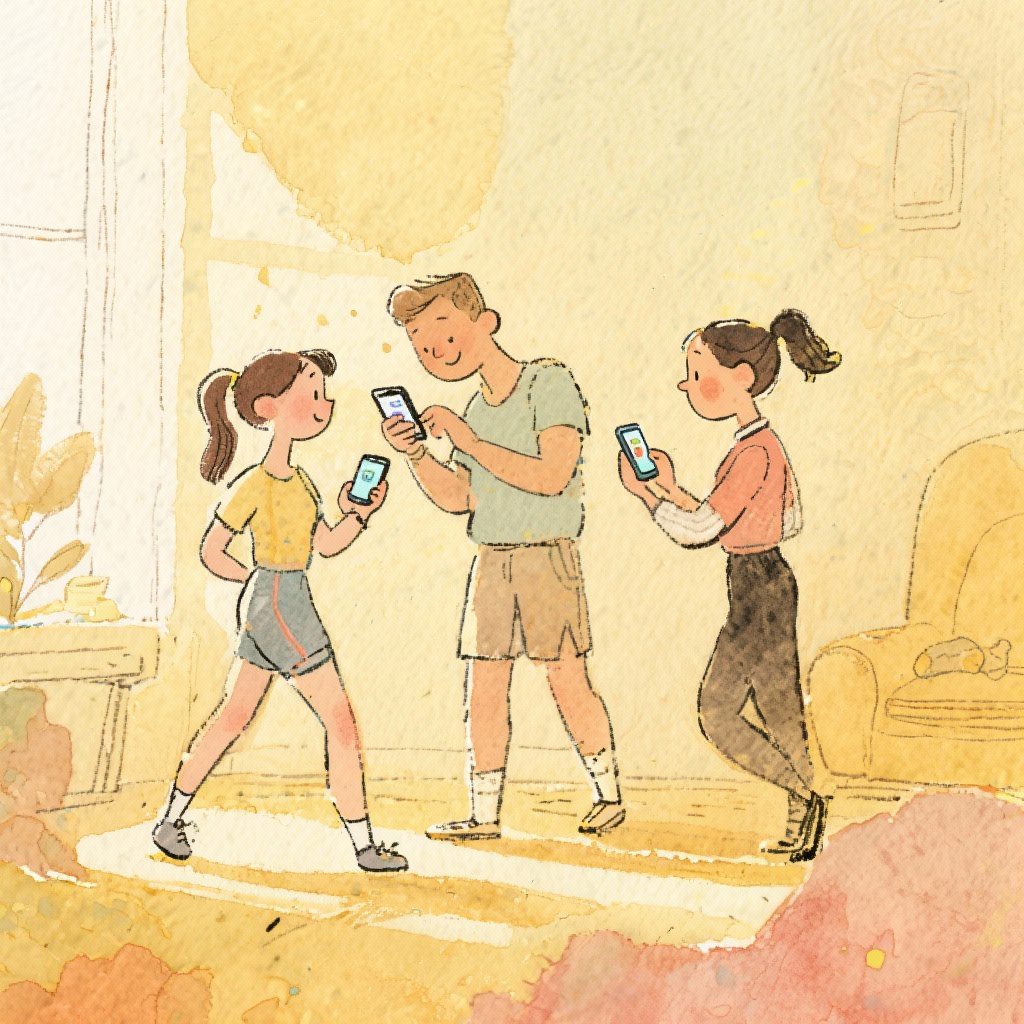It seems that technology and apps have been taking over our world for more than a decade. They have begun to influence our education, workplace environment, and even our social lives. There was a tremendous increase in the number of apps when we were no longer allowed to interact face to face, and everything transferred to the internet and phones. With newfound technology and need for versatility, phone applications have begun to replace inter-personal parts of our lives. Fitness has always been a large industry. With the increase in use, access, and need for technology, a lot of training and fitness programs are now available at your fingertips. Fitness apps are a growing way to conveniently get fitness training plans from your mobile device.
The overall intention of fitness apps has been a topic of conversation in the world of health and fitness related to technology. Because of the shift in society to create a world in which we can participate from the internet (e-lifestyle), apps have become an integral part of our lives. This shift to a e-lifestyle has created an effect on the intention and use of fitness apps. The usefulness and accessibility of fitness apps has increased due to the newfound confidence in the use of technology for everyday tasks. Consumers have a new understanding of technology, and it has become more accessible. So, fitness apps have become more even popular and more useful. The increased use of technology may be directly related to the Covid-19 pandemic from 2020.
There was a large increase in the use of technology during the Covid-19 Pandemic that swept the globe at the beginning of 2020. It was a time like never before. People were no longer able to interact with each other face to face making it difficult for things like school, work, and social environments to exist in a “normal” fashion. During the lock down there was a decline in use of devices like Fitbit because of the decreased movement outside of the home. The nature of physical activity changed during the Covid-19 pandemic. However, physical activity apps may have helped people become more physically active. According to a 2020 paper, “Our study revealed a positive effect of the usage of physical activity apps.” During their study they found an increased use of physical activity apps as well as the positive health effect that the apps had on the user during the pandemic. These apps were influential during the pandemic because people were no longer able to go to a physical gym to stay active. Many people did not own equipment, so these apps were able to provide them training programs that did not requirement extensive home equipment. However, it is unclear if these apps are as motivational and effective as having in-person training and personal interactions in a gym-like setting.
Phone apps have become a great way for users to continue to be active when a gym is not an option. They are a much more accessible and affordable option to a gym or training facility. To keep users engaged and motivated on their fitness journey, the apps need to use methods to keep the patrons using their app. One of the methods used is called gamification. Gamification is the use of game cleverly designed in a nongame context. This had been a widely accepted method for the retention, and, in this case, it is the consistent and repetitive use of the fitness app. The theory is, that when creating fitness and health apps, gamification will create an environment of motivation and result in a consistent use of the app. While gamification did increase the initial use of the app, it could not result in a consistent increase in ability. So, while gamification may influence initial motivation, there was no sustained use of the app. Gamification of apps in the health arena has potential to initiate and modify the health behaviors of its users. Gamification has been a trigger for the use of the app, but there is little evidence of producing sustained use.
Although there are many positives to using fitness apps, there may also be downsides to not training in person. One downside is not having the camaraderie of a traditional gym setting. When using an app, there is no one around to push you to lift slightly more weight or push yourself through a tough set. It relies solely upon self-motivation rather than outside factors. It is easier to ignore a notification on your phone telling you to push than to ignore your running partner! Another downside is that lack of equipment to integrate into a program. With a fitness app you can do many types of fitness training with no equipment. However, weightlifting, field sports, or Pilates may not be available due to lack of equipment and space. Fitness apps focus on alternatives and modifications for a more basic workout. For example, you may be asked to complete body weight squats or lunges rather than weighted squats or lunges. Even though it only provides alternatives for some exercises, fitness apps are a great way to keep active when there are limited options. The technology is very accessible making this format of fitness readily available at our fingertips.
Fitness apps have certainly changed the face of fitness as we know it. Fitness was traditionally a face-to-face activity. Trainers and classes were in the same gym or training facility. Since the pandemic, apps have been attempting to create a training environment from the comfort of your home. There are numerous apps including yoga, Pilates, body weight workouts, and running. These workouts can be completed with the equipment that you have in your home. This makes it easier for people to stay active during times when we are not able to interact face-to-face. This also allows people to stay active when traveling. They can stay in touch with their trainers and peers from far away. Apps like Strava allow communication with peers to share running times and routes. This allows everyone to make their training relatable and personal. You can also see what routes others have taken in a new area, perhaps one you may not have used. While fitness apps may have downsides, they have changed how we look at staying active, making it much more accessible, affordable, and attainable. Now, instead of paying hundreds at a gym or training facility, we can train for a few dollars a month (or even free!). It may take more self-discipline than a traditional setting, but many people have been able to access programs they never thought possible to create a healthier and more active society.
References
Lister*, C., West*, J. H., Cannon*, B., Sax*, T., Brodegard*, D., Group, L. M. H. C. R., & Lister, C. A. C. (n.d.). Just a fad? gamification in health and fitness apps. JMIR Serious Games. Retrieved November 30, 2022, from https://games.jmir.org/2014/2/e9/
García-Fernández, J., Gálvez-Ruiz, P., Grimaldi-Puyana, M., Angosto, S., Fernández-Gavira, J., & Bohórquez, M. R. (2020, September 18). The promotion of physical activity from digital services: Influence of e-lifestyles on intention to use fitness apps. MDPI. Retrieved November 30, 2022, from https://www.mdpi.com/1660-4601/17/18/6839
Yanxiang Yang, Joerg Koenigstorfer, Determinants of physical activity maintenance during the Covid-19 pandemic: a focus on fitness apps, Translational Behavioral Medicine, Volume 10, Issue 4, August 2020, Pages 835–842, https://doi.org/10.1093/tbm/ibaa086







































